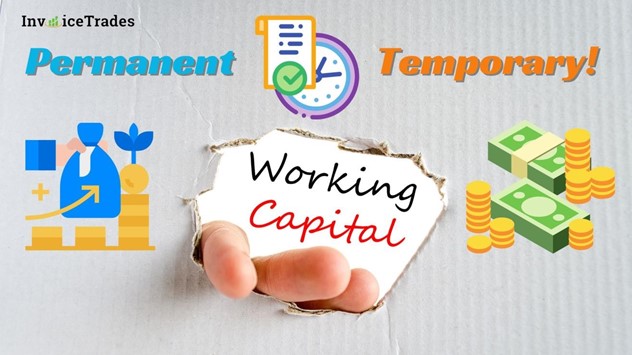
Working capital is a critical aspect of financial management for businesses, representing the funds required to carry out day-to-day operations. This working capital can be further categorized into permanent working capital and temporary working capital, each serving distinct purposes in sustaining a company's financial health.
Permanent working capital is the baseline investment needed to support ongoing operational activities. It represents the minimum level of current assets required to maintain regular business operations.
Permanent Working Capital = Minimum Current Assets − Minimum Current Liabilities
Unlike temporary working capital, permanent working capital is a long-term requirement, providing the foundation for the company's day-to-day activities.
It is utilized to cover the minimum level of current assets necessary for routine business operations. This includes maintaining essential inventory levels, managing receivables, and holding a baseline of cash reserves.
Permanent working capital is typically funded through long-term sources, such as equity capital and long-term loans. These sources provide a stable and consistent foundation for the company's ongoing needs.
Permanent working capital experiences minimal fluctuations over time. It remains relatively stable, regardless of changes in production levels or fluctuations in sales.
Examples of permanent working capital include the minimum inventory levels required for daily operations, the baseline of receivables, and essential cash reserves.
The risk associated with permanent working capital is low, as it represents the ongoing operational needs of the business. This stability contributes to the overall financial resilience of the company.
Temporary working capital refers to the additional funds needed to meet short-term or seasonal variations in production and sales. It addresses the variable component of working capital.
Temporary Working Capital = Maximum Current Assets − Minimum Current Assets
Temporary working capital is a short-term requirement that arises due to fluctuations in business activities. It is essential for managing variations in demand during specific periods.
It is employed to finance peak periods, such as increased production during festive seasons or higher sales volumes during certain months. Temporary working capital ensures the company can meet short-term demands.
Funding for temporary working capital is typically sourced through short-term instruments, such as short-term loans and trade credit. These financing options provide the flexibility needed to address short-term fluctuations.
Temporary working capital is subject to significant fluctuations based on the business cycle, seasonal demand, or other short-term factors. It adjusts dynamically to meet the changing requirements of the business.
Examples of temporary working capital include additional inventory held during holiday seasons, increased receivables during peak sales periods, and temporary cash reserves to manage shortterm demands.
The risk associated with temporary working capital is higher compared to permanent working capital. It is influenced by external factors and can vary significantly over short periods, requiring careful management to avoid liquidity issues.
Total Working Capital = Current Assets−Current Liabilities
Total working capital is the sum of permanent and temporary working capital. It provides a comprehensive view of a company's short-term liquidity, incorporating both the stable, ongoing needs and the variable, short-term fluctuations.
Financing Working Capital (Permanent) = Long-term Debt + Equity Financing
Financing Working Capital (Temporary) = Short-term Debt + Trade Credit
Permanent working capital is typically financed through long-term sources like equity and longterm debt, providing a stable foundation. On the other hand, temporary working capital is often financed through short-term debt and trade credit, offering the flexibility needed to address short-term fluctuations.
At InvoiceTrades, we excel in providing tailored solutions to empower businesses in optimizing their working capital management. Our seasoned team of financial experts is dedicated to assisting you in finding the optimal equilibrium between permanent and temporary working capital, guaranteeing that your business possesses the financial resilience required for sustained growth. Our array of financial solutions and strategies are meticulously crafted to meet your distinct needs, whether it involves enhancing cash flow efficiency, minimizing surplus inventory, or elevating accounts receivable turnover.
Unlock the potential of your business by streamlining working capital management with InvoiceTrades. Reach out to us today and embark on the journey to financial stability and success. Our team of seasoned professionals stands ready to offer personalized financial guidance, empowering your business to flourish and thrive.
• Permanent working capital represents the baseline funds needed for day-to-day operations, ensuring ongoing business activities.
• Temporary working capital addresses short-term fluctuations, responding to dynamic business cycles and seasonal demands, unlike the stable nature of permanent working capital.
• Minimum inventory levels, baseline receivables, and essential cash reserves are examples of permanent working capital.
• Total working capital is the difference between current assets and current liabilities, providing a comprehensive view of a company's short-term liquidity.
• Striking the right balance involves careful financial planning, utilizing long-term sources for permanent and short-term instruments for temporary working capital needs.